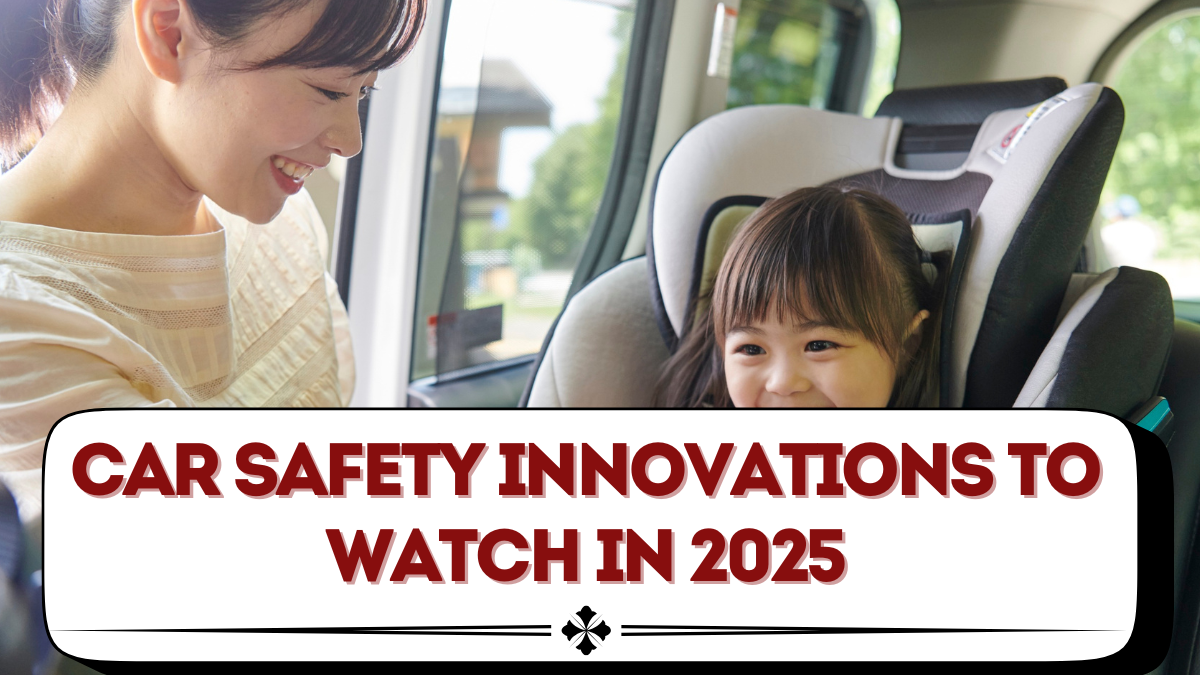Car safety has always been at the forefront of automotive engineering, but in 2025, innovations are reaching new levels. With advanced driver-assistance systems (ADAS), predictive crash sensors, and smart airbags, cars are not only designed to protect passengers in the event of a crash but to actively prevent accidents before they happen.
As governments tighten safety regulations and consumers demand better protection, automakers are embracing cutting-edge technologies. This year’s car safety innovations 2025 represent a mix of digital intelligence, improved crash resilience, and connected safety features that could save thousands of lives.

Evolution of Car Safety in 2025
Traditionally, car safety relied on mechanical elements like seatbelts, crumple zones, and airbags. In 2025, however, safety is increasingly digital. Artificial intelligence and real-time data processing are allowing vehicles to predict hazards, communicate with infrastructure, and deploy systems faster than ever before.
Today’s cars are not just protecting passengers—they are actively anticipating risks on the road.
Key Car Safety Innovations in 2025
1. Smart Airbags
Traditional airbags are designed to deploy in a crash, but smart airbags use sensors to measure passenger size, seating position, and crash force. They deploy with the right pressure, reducing injuries caused by overly powerful airbag inflation.
2. Predictive Crash Sensors
New crash sensors can anticipate a collision milliseconds before it occurs, allowing airbags, seatbelt pretensioners, and braking systems to activate preemptively.
3. Advanced Driver Assistance Systems (ADAS)
ADAS features like lane-keeping assist, adaptive cruise control, and collision avoidance are now more advanced, using AI for smoother decision-making.
4. 360-Degree Cameras & LiDAR
More vehicles are equipped with LiDAR and high-definition cameras that create real-time 3D maps around the car, enhancing blind-spot monitoring and parking safety.
5. Connected Safety Systems
Cars in 2025 are increasingly connected to road infrastructure, receiving alerts about road hazards, accidents, and traffic signals. This enables drivers to react earlier to potential dangers.
6. AI-Powered Driver Monitoring
New monitoring systems use cameras and sensors to track driver behavior, detecting drowsiness, distraction, or intoxication, and issuing alerts—or even intervening.
7. Emergency Auto-Brake Systems
Cars can now automatically apply brakes not just for obstacles but also for pedestrians and cyclists, significantly reducing road accident risks.
Comparison of Major Safety Features
| Innovation | Function | Benefit |
|---|---|---|
| Smart Airbags | Adjust deployment | Reduces injury risk |
| Predictive Crash Sensors | Detect collisions early | Activates safety in advance |
| ADAS | Assists driving | Prevents lane drift & collisions |
| LiDAR + 360° Cameras | Real-time environment mapping | Eliminates blind spots |
| Connected Safety | Communicates with infrastructure | Improves reaction time |
| AI Driver Monitoring | Tracks driver condition | Prevents distracted driving |
This table highlights how 2025’s safety technology is more proactive than reactive.
The Role of Regulation and Consumer Demand
Governments are pushing stricter crash standards, especially in the EU and North America. Automakers now must meet benchmarks in pedestrian safety, crash avoidance, and driver monitoring. Consumers, too, are willing to pay extra for vehicles with comprehensive safety features, making safety a selling point rather than just a legal requirement.
Benefits of 2025 Safety Innovations
-
Fewer Road Accidents – Smarter ADAS reduces collisions caused by human error.
-
Improved Survival Rates – Predictive airbags and sensors protect better during accidents.
-
Safer Pedestrian & Cyclist Roads – Automatic braking and LiDAR help reduce non-vehicle casualties.
-
Increased Insurance Incentives – Cars with advanced safety features may qualify for lower premiums.
-
Enhanced Driver Confidence – Monitoring systems reduce risks from distraction and fatigue.
Challenges Ahead
While these innovations are promising, challenges remain. AI systems can misinterpret data, false alarms may frustrate drivers, and maintenance costs for LiDAR and sensors can be high. Affordability is another concern, as many of these innovations are still limited to premium vehicles.
FAQs
What is the most important car safety innovation in 2025?
Smart airbags and predictive crash sensors are leading the way, offering tailored protection and faster response.
Are ADAS features mandatory in 2025?
In some regions, yes. The EU and U.S. have made certain ADAS features mandatory for new cars.
Do safety innovations increase car prices?
Yes, but costs are decreasing as technology becomes mainstream. Insurance discounts can offset expenses.
Can AI driver monitoring prevent accidents?
Yes, by detecting drowsiness, distraction, or intoxication, these systems can reduce driver-related crashes.
Will older cars get these features?
Some innovations, like driver-monitoring cameras and collision avoidance systems, are available as aftermarket upgrades, but full integration is best in new models.
Conclusion
The car safety innovations 2025 show a clear shift toward smarter, AI-driven, and predictive systems. From airbags that adapt in milliseconds to driver monitoring that prevents accidents, the technology is saving lives and reshaping consumer expectations. While affordability and adoption are challenges, the direction is clear: cars in 2025 are not just vehicles but intelligent guardians of road safety.
Click here to know more.
